Why Are Some Pigeons Brown and White?
Pigeons are a common sight in towns and cities around the world. And if you have seen enough of them, they come in various colors.
But why are some pigeons brown and white? A combination of genetics and environmental factors determine the feather color of pigeons. That is, pigeons have different genes responsible for colors and patterns. Therefore, some pigeons are brown and white.
So, what feather color should pigeons actually have? And is the brown and white coloration just for genetic color dominance? Let’s take a deep dive into the topic to learn more about it.
Read more about pigeon blogs:
Is a Brown Pigeon a Dove?
“Pigeons” and “doves” are often interchangeable. After all, pigeons are descendants of wild Rock Doves. Calling these birds one or the other is totally okay. There is also some overlap in terms of traits for the two groups.
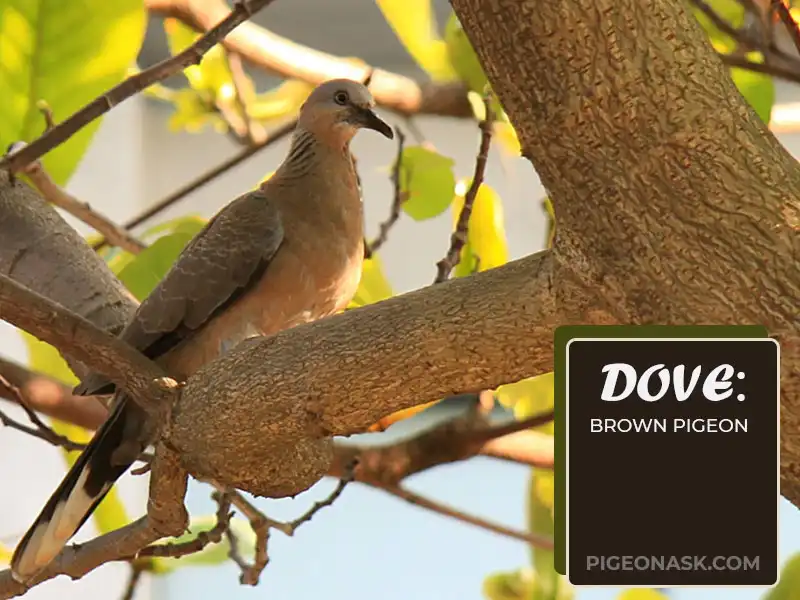
To be exact, doves and pigeons belong to the same family, Columbidae. For that reason, you can technically consider a brown pigeon to be a dove. But in general, “Dove” is often referred to the delicate-looking small family members.
On the other hand, “Pigeon” is used to refer to the larger and stockier members. So, to avoid confusion, it is better not to call a pigeon a dove.
What Color Are Pigeons Supposed to Be?
The color pattern of pigeons varies. However, the most dominant color for these birds is bluish-gray with black bands on the black tip of the tail and wing. And if you look back, these birds’ ancestors have mostly gray-blue plumage.
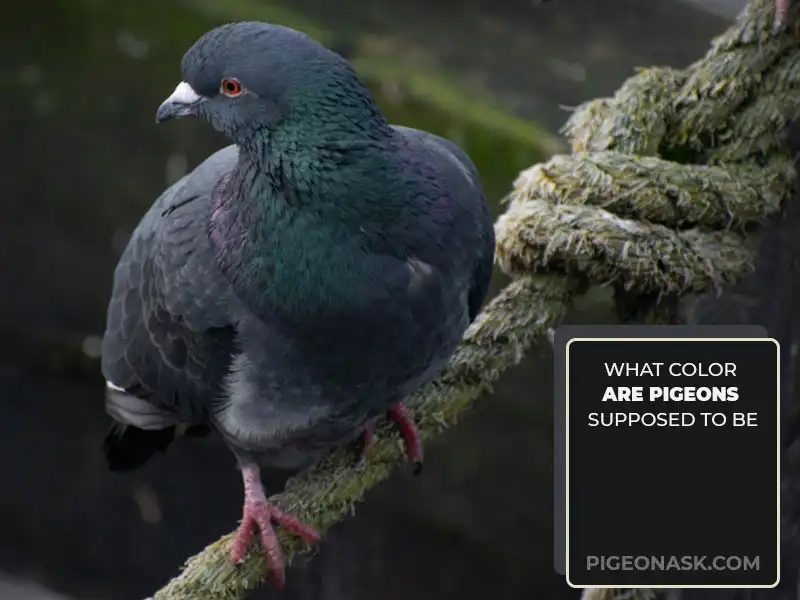
Over time, selective breeding and environmental factors gave pigeons different feather colors. That is why you will see green, blue, brown and white, and red colored pigeons.
In the wild, you will even find pigeons exhibiting unique features. For example, in western North America, there are band-tailed pigeons. Likewise, in New Guinea, you will find pigeons with bluish-gray bodies with an eye-catching blue crest.
Are Brown Pigeons Rare?
Although you might not have seen too many brown pigeons, this coloration for the birds is not considered rare. In fact, many different domestic breeds and species of pigeons exhibit a brown coloration.
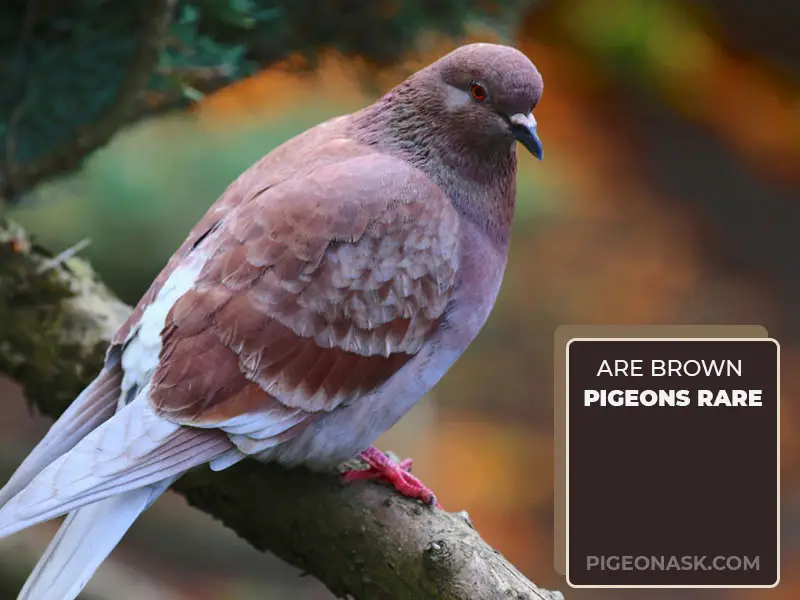
On that note, the brown coloration of pigeons can range from light tan to dark brown. Sometimes, you will even find reddish-brown feathered pigeons. None of them is considered rare, as selective breeding can make the birds end up with such colors.
However, some color variations within a breed might be more sought after by pigeon enthusiasts. That eventually makes others believe that some specific colors are rare for these birds.
Are There Any Genetic Mutations That Cause Pigeons to Be Brown?
Genetic mutations can cause pigeons to be of a different color than others. After all, the coloration of pigeons, like any other trait, depends on environmental and genetic factors.
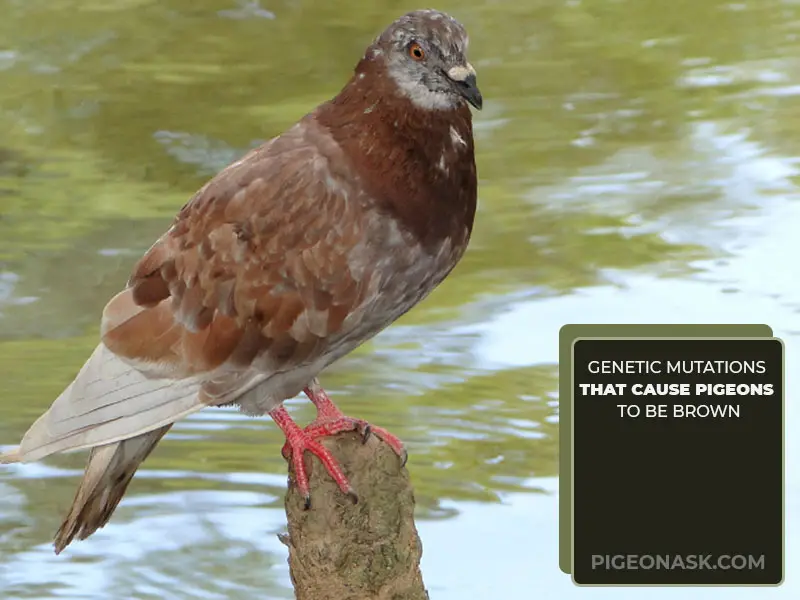
Regarding pigeons, the main factor contributing to the coloration of the feathers is melanin. And melanin production is controlled by a group of genes called melanin pathway genes. Mutations in these genes can make the birds get a different color.
Likewise, the TYRP1 gene can contribute to the brown coloration of pigeons. This gene plays a crucial role in eumelanin production, which, again, is a type of gene that give the feathers colors.
Another gene that can cause pigeons to have brown color is the MC1R gene. It controls melanin, which depends on environmental factors such as sunlight. Mutations in these genes will make the pigeons have a unique color.
What Factors Lead to the Coloration of Some Pigeons?
A couple of factors come into play for the coloration of pigeons. That includes genetics, habitat, some environmental factors, and diet. Here is a brief discussion of each of the factors:
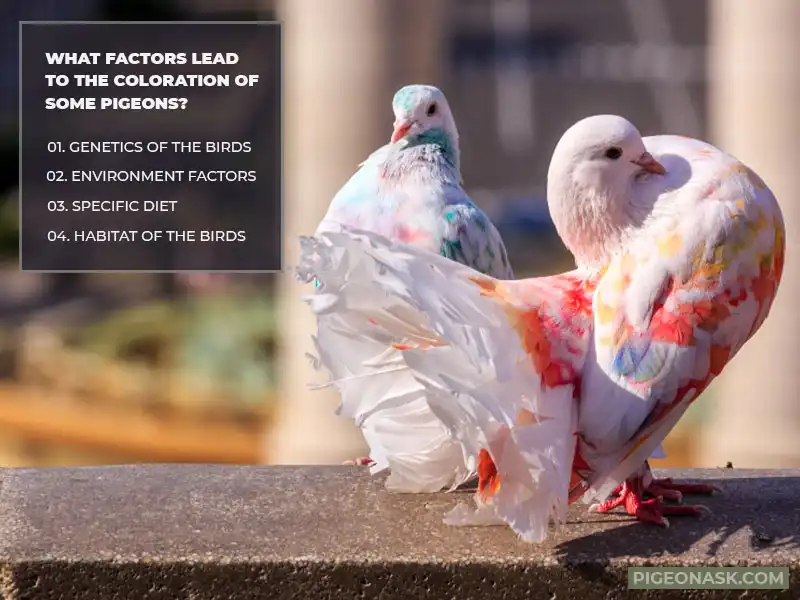
Genetics of the Birds
As discussed above, genetics play a significant role in the feather coloration of pigeons. Some genes control the distribution of melanin, which, as you know, is the main factor in feather color. And sometimes, there are gene mutations.
But, in most cases, the genes that offsprings inherit from their parents will eventually determine what color they will be.
Environment Factors
Sunlight can fade or darken the plumage of the pigeons. So, with overexposure to sunlight, the birds can have a different color than the result. Also, some environmental conditions favor specific patterns and colorations.
Specific Diet
The intensity and shade of the feathers depend on the diet. For example, carotenoids available in plants can make the birds get a hue of orange or yellow color. Likewise, other foods contribute to the coloration of feathers.
Habitat of the Birds
Pigeons living in urban settings face different living conditions than wild ones. City dwellers are exposed to pollution, which can impact the coloration of the feathers. For example, high air pollution can lead to a darker overall plumage.
Final Words
Are you still wondering why are some pigeons brown and white? To summarize, it all depends on the combination of environmental and genetic factors. That is why some pigeons obtain a different feather coloration than others.
With that out of the way, let us know your thoughts about the feather colors of pigeons. Do you believe that there could be other reasons? If so, let us know about them. You can connect with us through Facebook, Pinterest, and Twitter.
Reference:
- Phys.org/news/2014-02-birds-major-genes-feather-hue.html
- Allaboutbirds.org/guide/Rock_Pigeon/id#
Image Credit:
- Canva.com/photos
